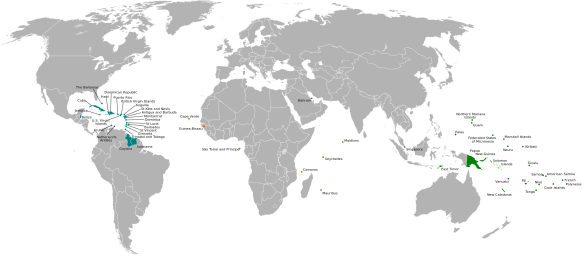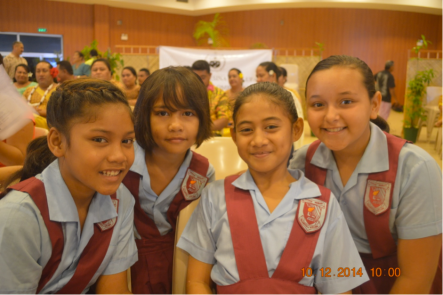Kosovo faces policy challenges large and small. On one hand, the country is working towards EU accession, while on the other; it is struggling with delivering basic services to citizens such as waste management. Coming to Pristina from my hometown of Seattle, WA, possibly one of the United States’ greenest, most environmentally friendly cities, the disarray of services was troubling. Currently, recycling services are limited and/or dysfunctional, dumpsites are constantly overflowing, trash fires are not uncommon especially in rural areas, and coordination of stakeholders is lacking. After seven months here, and after becoming more acquainted with the waste management system of Kosovo, I have learned that a complex web of nepotism, complacency and disorganization are endemic throughout this system that should serve to support citizen’s quality of life. Something has to change, the question is who will change it, and where does one start?
The Ministry of Environment and Spatial Planning in Kosovo has developed a beautiful Waste Management Strategy 2012 – 2021 which acknowledges many of the current challenges and inhibitors to systemic reform (http://mmph.rks-gov.net/repository/docs/+SRKMM_Ang_270038.pdf ). The challenge, as with most of Kosovo’s strategies, is the implementation. Kosovo’s central government has delegated many competencies to the municipal level, one of which is waste collection. Municipalities have the option to contract a publicly owned enterprise (POE) for waste collection either on their own or through the system of inter-municipal partnerships with a single enterprise often serving up to 5 municipalities. The private sector also plays a role in waste collection. The big companies are well known throughout Kosovo. These companies not only rule the way trash is collected in Kosovo, but also have shown little interest in improving the system, or making services better for citizens. In some municipalities payment collection for trash collection range from 40 – 50% as citizens are not willing to pay the 4 – 5 Euros a month for what tends to be poor service, or simply can’t pay. Kosovo’s landfills are also overburdened and the incentives/enforcement for companies to utilize legal dumpsites are lacking. Further, at least 40% of Kosovo’s waste is organic household material such as vegetables, fruit, and yard waste which release dangerous greenhouse gases into the atmosphere while also added to an already overburdened system.
To date, the informal sector has been a large part of waste management with the absence of any formal mechanisms, particularly for plastic recycling, With a large disenfranchised minority population of Roma, Ashkali, and Egyptian descent, those with an entrepreneurial drive have taken to the streets to collect plastic bottles discarded at dumpsites. Empty plastic water bottles are ubiquitous due to widespread distrust of tap water quality. The informal collectors take the bottles to Kosovo’s recycling companies who then provide a small sum of money, often much less than the market rate for recycled goods. Recent efforts by international donors and civil society are bringing more attention to this issue to formalize this work in order to improve safety standards and bargaining power for this community. The European Center for Minority Issues, for instance, has received an EU grant to establish a recycling collective to do just that. Another innovative initiative “Pimp my Carroça, uses a Brazilian idea to raise awareness, you can view the story here.
So whose responsibility is it to improve the waste collection system and ultimately the public environment in Kosovo? Government has delegated the job to these POEs, and citizens expect this service from the Government. Meanwhile, citizens seem to feel little individual responsibility to keep their city clean, possibly as a result of Kosovo’s storied history fighting for independence. After generations of living under some type occupation, little citizen ownership is felt towards the public space in Kosovo; littering could be seen as a type of defiance against the occupying state. Now, however, Kosovo has achieved what it has sought for so long, their own, independent country that must be nurtured and cared for. What is the role for government, civil society, business, and the international donor community to solve this challenge? The answer is not simple and will take a dynamic approach with all actors engaging with their best efforts.
While waste management requires a systemic approach from many stakeholders, I believe in the power of small-scale initiatives, utilizing the power and energy of citizens. As a Fulbright Clinton Fellow, the least we can do is leave the communities we work in slightly better off then we found them, and why not share the American spirit of volunteerism and community while at it? Keeping in mind that so much organic waste is produced in Kosovo, compounded with the facts that soil and water quality remains poor, pollution is high, and agricultural land is increasingly degraded, the idea came to develop a community compost site in downtown Pristina. This would be a small initiative that could support a greater cultural shift – a shift towards environmental awareness. Many farmers throughout Kosovo are already composting on their own land, however, the urban centers have been void of such initiatives. After connecting with community composters in Belgium, to identify best practices and potential challenges, I set out on making this idea a reality for Kosovo’s capital city.
So why community compost? Successful recycling initiatives for plastic, glass, paper and metal require systematic environmental education campaigns, community support, and infrastructure, all of which is lacking in Kosovo. Community compost targets the grassroots level of educating members of a community on the natural recycling process, positive impacts on landfills and the greater environment while also uniting a community around improving their livable space. It does not require the infrastructure widespread plastic, glass, paper and metal recycling systems do, and would serve as a stepping stone to bigger recycling initiatives. Gaining support for this initiative was not easy and will continue to be a challenge. Despite the skeptics and the naysayers, a few institutions believed in the concept and united to bring the community compost site into fruition.
Our project, Kompostimi në Lagje (English: Composting in the Neighborhood), launched on Earth Day 2015 under the Green Art Center’s EcoFriend initiative (www.mjedisi.com) with support from the municipality of Prishtine and GIZ (Deutsche Gesellschaft für Internationale Zusammenarbeit) as well as volunteers from the American University in Kosovo. Kompostimi ne Lagje’s slogan: Prishtine’s first initiative for composting in the neighborhood, FOR the neighborhood, FROM the neighborhood. Kompostimi në Lagje is in, Parku y Qytetit (City Park), one of Prishtina’s central parks which is surrounded by a diverse group of residents, including a mix of locals and internationals from well-off to lower middle class. With Kompostimi ne Lagje, each and every neighbor can make a positive impact on their environment, one bucket of organic household waste at a time.

At the Kompostimi në lagje launch on Earth Day, volunteers explained urban composting and how residents could contribute to the neighborhood site. In the afternoon, even some of the neighborhood kids were out helping us paint and explaining the initiative to those passing by. Residents were excited to see this initiative in their local park. In our first week we gained support from 35 families, 4 coffee shops and 3 vegetable markets to contribute their organic waste. Meanwhile, additional recruitment is ongoing. With additional sign-up activities we now have 60 families who have committed to bring their organic waste and are looking forward to the rich soil product it will return. In a society accustomed to short term development projects many citizens asked at the launch day event “how long will the project be active?” I was happy to reply “Hopefully, forever!”.
The project was also featured as part of the recent Community Design Symposium developed by AUK and sponsored by the US Embassy. The project served as an example of how composting and recycling can be an inclusive, community oriented activity with a positive development impact.
Success is not guaranteed for the project, but the initial support is encouraging, showing just a small bit of hope that Pristina’s residents have a stake in their community and want to contribute to its success. The compost site has become a focal point of the park, something residents both young and old have a stake in, and can hopefully be replicated in neighborhoods through Pristina, and eventually Kosovo. Check out the initiative’s Facebook page here: https://www.facebook.com/PristinaKompostimi
While Kompostimi ne Lagje will not solve Kosovo’s waste management challenges alone, it is a small piece of the puzzle, one part of the dynamic approach necessary. This small puzzle piece targets important ideals, particularly, citizen- involvement in their communities and their contribution to environmental sustainability. Let’s hope for Kosovo that this contribution to the puzzle will slowly complete a corner, leading to greater institutional change.
By Micaela Thurman
Fulbright-Clinton Fellow – Kosovo




















